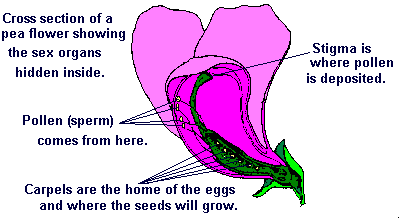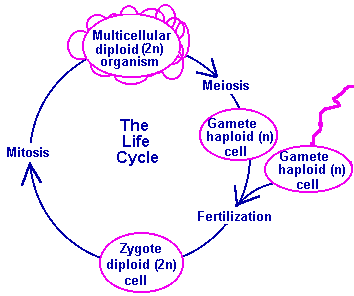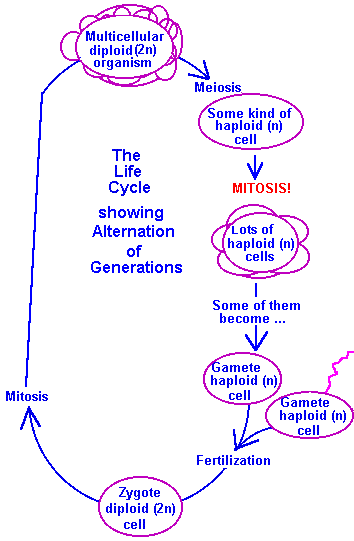
|
Student's Study Guide for Lesson Six
by Dr Jamie Love |

|
 and
and  licensed under a Creative Commons Attribution-ShareAlike 4.0 International License.
licensed under a Creative Commons Attribution-ShareAlike 4.0 International License.

|
Student's Study Guide for Lesson Six
by Dr Jamie Love |

|
Sexual reproduction is a cycle that __________ between haploid (n) ___ diploid (2n) cells. Meiosis is required for sexual reproduction. Unique _______ are created.
Asexual reproduction does not alternate between haploid and diploid - it's _____ all the way - and the offspring are ______ (copies) of the parents.
|
Hermaphroditism is the coexistence of both male and female
sex organs, producing male and female _______, in the same ________.
It's common among _____________ and very common among plants (where it is called __________). Possible for some species of hermaphrodites (especially plants) to fertilize __________ in a process called "selfing". This is ______ reproduction! |

|
In order to self, the organism must first produce gametes. That requires meiosis - a "sign" for ______ reproduction.
Imagine that a plant with #1M and #1P could produces gametes with either #1M or #1P. It would produce thousands of these and it is possible that an egg carrying #1M could be fertilized with a pollen carrying #1M to produce a zygote that is #1___, #1___.
Many plants can also reproduce ________, sending out shoots or
______ that are simply extensions of themselves. These can break
away from the parent body and generate a new individual but that
individual will be an exact copy, a ____, of its parent. ________
are clones of the parent.
There are no gametes. Only _______ is involved. The "sign"
for asexual reproduction is the total ____ of meiosis, gametes
or fertilization!
When animals reproduce asexually we call it ______________.
("Parthenos" is Greek for "virgin".) All-female-species
have no males in the population and reproduce _________.
Dolly was created without meiosis, _______ or fertilization.
(This is a sign of what kind of reproduction?)
[_______.]
|
The life cycle is the span of the life of an organism from
the moment of _____________ to the time it __________.
To us, the haploid stage is merely a requirement to make a ______. Our haploid cells, once created do "nothing". They just hang around waiting to _________ something or be fertilized. Our diploid (2n) cells undergo mitosis but our haploid (n) cells _____ undergo mitosis. |

|
|
In some organisms the haploid (n) phase may undergo _____(!)
and these cells may make up a substantial portion of an organism
and its life cycle!
An organism that undergoes mitosis of its haploid cells is said to have ___________ of ___________. In fungi and mosses the haploid phase is quite prominent and each of these taxa has its own name for each part of their complex life cycle.
Many species of "primitive" plants use alternation of
generations during their life cycle but among _______ plants
the diploid (2n) phase dominates.
|

|
Fill in each square (using the lesson of course) to complete this chart/table.
| Interphase |

|

|

|
|
|
|
| |
| Prophase |

|

|

|
| Prometaphase |

|

|

|
| Metaphase |

|

|

|
| Anaphase |

|

|

|
| Telophase |

|

|

|
| Comments |

|

|

|
|
|

|

|

|
| Comments |
|
|
|
| Final Comment |

|

Now go to top of next column! |

|